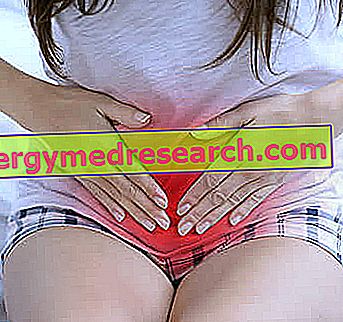Related articles: Endometriosis
Definition
Endometriosis is the growth of a tissue similar to the lining of the uterus in locations where it normally should not be (ie outside the uterus). This tissue responds to the hormonal variations that characterize the menstrual cycle, proliferating, flaking and bleeding just like the uterine endometrium (innermost lining of the uterus). The transudation of blood that occurs during menstruation causes local irritation and, in the long run, scars that can give rise to more or less widespread adhesions between various organs and tissues.Most common symptoms and signs *
- Acne
- Decline in sexual desire
- Abdominal cramps
- Diarrhea
- dyschezia
- Dismennorea
- Late dysmenorrhea
- Pain in a hip
- Abdominal pain
- Pain in the Navel
- Ovarian pain
- Pain during sexual intercourse
- Pelvic pain
- infertility
- Iridodonesi
- Backache
- Menometroraggia
- Menorrhagia
- Metrorrhagia
- pneumothorax
- polymenorrhea
- Vaginal bleeding
- Constipation
- Retrospective Uterus
- Vaginismus
Further indications
The key symptom of endometriosis is pain, which can be mild, moderate or severe, with a tendency to worsen over the years if the condition is not treated. In some women endometriosis has an asymptomatic course; when present, the pain is widespread in the pelvic region, sometimes it is aggravated by sexual intercourse, urination or defecation and is typically accompanied by back pain and abdominal pain. Painful symptoms can last from the pre-menstrual phase to the post-menstrual phase (dysmenorrhoea), but they can also be exacerbated by ovulation. The woman suffering from endometriosis can also complain of a particularly abundant menstrual flow (menorrhagia) or bleeding outside the menstrual cycle (menometrorrhagia). Beyond the symptoms described above, endometriosis is known as one of the main causes of female infertility. The symptoms of endometriosis disappear if a pregnancy occurs and in the post-menopausal period. In fertile age an incidence of 5-10% is estimated in the female population.



